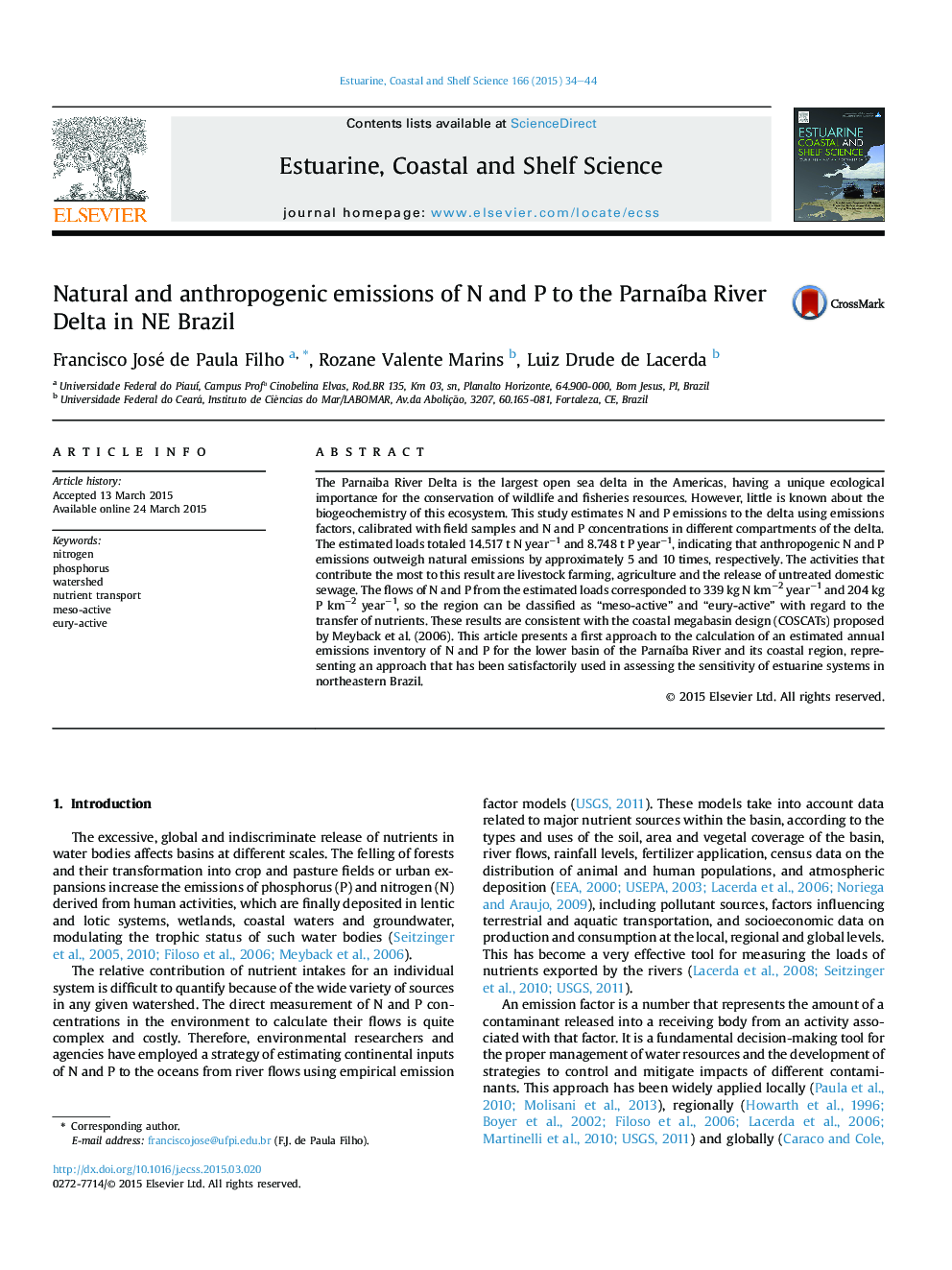| Article ID | Journal | Published Year | Pages | File Type |
|---|---|---|---|---|
| 4539361 | Estuarine, Coastal and Shelf Science | 2015 | 11 Pages |
•The study provides new data on loads of N and P for tropical estuaries.•Anthropogenic fluxes of N and P to exceed the natural fluxes for estuarine delta.•Rural drivers exceed the urban contributions of N and P to tropical delta.•The estimates of N and P support the strategies for watershed management.
The Parnaiba River Delta is the largest open sea delta in the Americas, having a unique ecological importance for the conservation of wildlife and fisheries resources. However, little is known about the biogeochemistry of this ecosystem. This study estimates N and P emissions to the delta using emissions factors, calibrated with field samples and N and P concentrations in different compartments of the delta. The estimated loads totaled 14.517 t N year−1 and 8.748 t P year−1, indicating that anthropogenic N and P emissions outweigh natural emissions by approximately 5 and 10 times, respectively. The activities that contribute the most to this result are livestock farming, agriculture and the release of untreated domestic sewage. The flows of N and P from the estimated loads corresponded to 339 kg N km−2 year−1 and 204 kg P km−2 year−1, so the region can be classified as “meso-active” and “eury-active” with regard to the transfer of nutrients. These results are consistent with the coastal megabasin design (COSCATs) proposed by Meyback et al. (2006). This article presents a first approach to the calculation of an estimated annual emissions inventory of N and P for the lower basin of the Parnaíba River and its coastal region, representing an approach that has been satisfactorily used in assessing the sensitivity of estuarine systems in northeastern Brazil.
